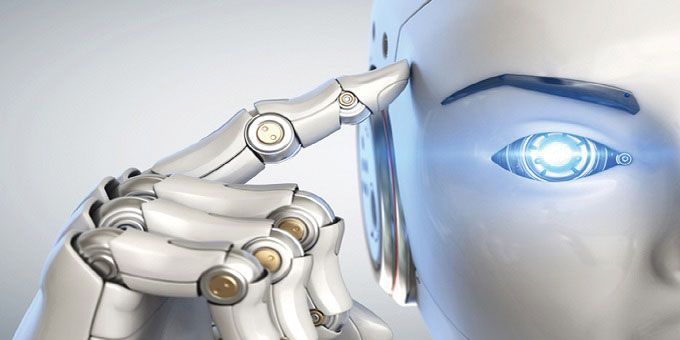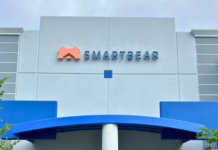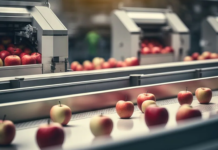
INTRODUCTION
A smart robot is a machine stimulated by artificial intelligence, fictionally it was portrayed as a super advance machine that is programmed to perform a complete task and functions beyond human capabilities. In reality, the smart robots ecosystem also entails robots that can work along with humans in collaboration. These robots are known to identify, learn, adapt, and alter their operation by understanding their environment. They can work on the instruction of humans as well as self-consciousness, and be able to come up with unique solutions. Smart robots have found their application not in just the manufacturing and automation sector, but they are been massively deployed across numerous industries, including, healthcare, retail, agriculture, logistics, education, banking & finance, among others.
The current technology of smart robots is integrated with the Internet of Things (IoT) and artificial intelligence (AI), that have made smart robots an attractive option for companies across various sectors to employ, for customization of the experience of the user, accelerate the efficiency and ramp up the productivity.
DEVELOPMENT OF TECHNOLOGY
Research labs have made amazing advances in merging AI and robots to reach such dexterity in the previous several years, but incorporating them into the real-world setting has been an entirely new side of technical advancements. Lab robots can be accepted with an accuracy of 60% to 70%, but when it comes to warehouses and heavy industrial operations, nothing less than 90% accuracy can be accepted. Achieving autonomy of hand gestures and keeping the robots in close contact with humans, demands more than just the right equipment. The technology should have the agility to adapt to the changing requirement and, a wide range of shapes and sizes of products.
A key development in the robotic arena is the Intelligent Assist Device (IAD), which offers the facility to extend the reach and strength of the robots by giving a command. It is not a replacement of humans or robots, rather, it assists its human operator as a bionic arm in a wide range of areas.
Further, the most popular imagination of a robot was a humanoid, that resembles a human body. Nonetheless, with remarkable breakthroughs from engineering firms, the world has come close to achieving seamless human movement in a robot. For instance, NASA working with an Austin-based robotics company is in progress to develop a humanoid robot named Apollo, that will be programmed to perform the task in the commercial sector, space, and most importantly, at home. However, the as per the report, the commercial rollout of these humanoid robots will not begin until 2024.
LAUNCHES OF SMART ROBOTS
There have been multiple launches from research institutions and the private sector in the smart robots sector. The researchers of MIT in collaboration with Princeton University have revealed its innovation robo picker, a smart robotic innovation that picks and packs. This robot one day will be smart enough to assist humans in household chores, organizing a warehouse, and help in the work that involves picking and sorting. Moreover, the larger version of this robot-picker can also be employed at the disaster site, for saving humans and clearing out debris. This innovation has been programmed with an object-agnostic grasping algorithm, that facilitates the sorting mechanism in the clutter, and finds the perfect to hold on to the item even before picking it.
Next, UC Berkeley announced the development of a robot, that successfully do food deliveries to students, staff member, and faculty present on the campus. Again, a company launched a smart robot, Baxter, which is popularly known as ‘COBOT’. It is not designed to outperform humans, but to work together and in contact with humans. It is an industrial robot but has a major difference from a traditional robot model. While a typical industrial robot autonomously performed the task which it was made for, Baxter can work different small tasks with the instruction of humans, it is found to be way more flexible since it can be employed on different tasks on the same day at the industries. The company has also introduced a different version of the Baxter robot that is meant for the research and education sector and it is embedded with a ROS-compatible SDK.
DISCUSSION
It is predicted that by 2023, around 40% of G2000 manufacturers are likely to connect nearly 30% of robots to their cloud platform for increasing work efficiency, and around 25% of retail stores are expected to employ or explore in-store robots for removing the extra burden from the shoulder of the human workers and boost the productivity by 40%. The International Data Corporation (IDC) counts robotics as one of the six accelerators of innovations in the world, which will drive digital transformation around the globe.
However, currently, there have been major instances of robot failure, the most talked about was the failure of Mitra, designed and developed by India. The robot was built to greet Indian Prime Minister Narendra Modi and Ivanka Trump at Global Entrepreneurship Summit. Mitra failed to execute the task owing to inadequate programming. It simply could not manage several queries at the same time.
These failures indicate that humans have much more to learn about robotic technology through errors and experience to thrive. Regardless of extensive research, the robotics industry is still acknowledged to be susceptible to errors, with numerous breakdowns. The categories of robotic failures are
- Human Failure: These are generally called errors, and they take place during human interaction with computers or robots
- Physical Failures: These failures occur due to problems found in the effector, sensors, power, or control system.
Errors are classified based on the impact of a failure that occurs when they are carrying out the task at hand. A terminal robot failure ends the robot’s current mission. A non-terminal robot failure, on the other hand, causes an apparent decline in the robot’s operational capacity.
The current market scenarios suggest that if the robots will advance to become safer, more flexible, and smarter, their deployment in manufacturing and third-party logistics will double in the near future. The world’s robot population is approaching one million, with Japan accounting for nearly half of that total and the United States accounting for only 15%. Around 90% of robots are currently employed in assembly lines, performing repetitive tasks. As per research study by Research Nester, the smart robots market size is projected to surpass more than USD 363.72 Billion by the end of 2035, growing at a compound annual growth rate (CAGR) of over 33.50%.
CONCLUSION
Researchers are primarily focusing on robots to assist the human by replicating their responses and intelligence, still, there is a huge area of improvement to be done.
Most robots do not have quick sight and rapid object identification, and it is still a long way off. The adoption of the existing robot is particularly for the considerate task and there is a lack of multifunctionality. However, foreseeing the multitude of benefits of robots and their contribution to enhancing industrial processes, the world will fail to imagine their lives without robots in the next 20 years from now.



















